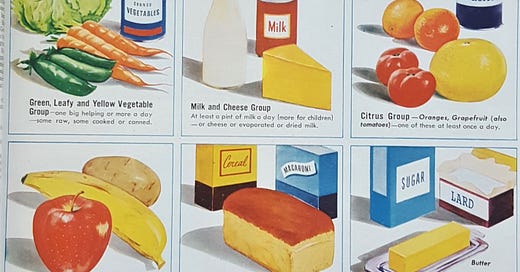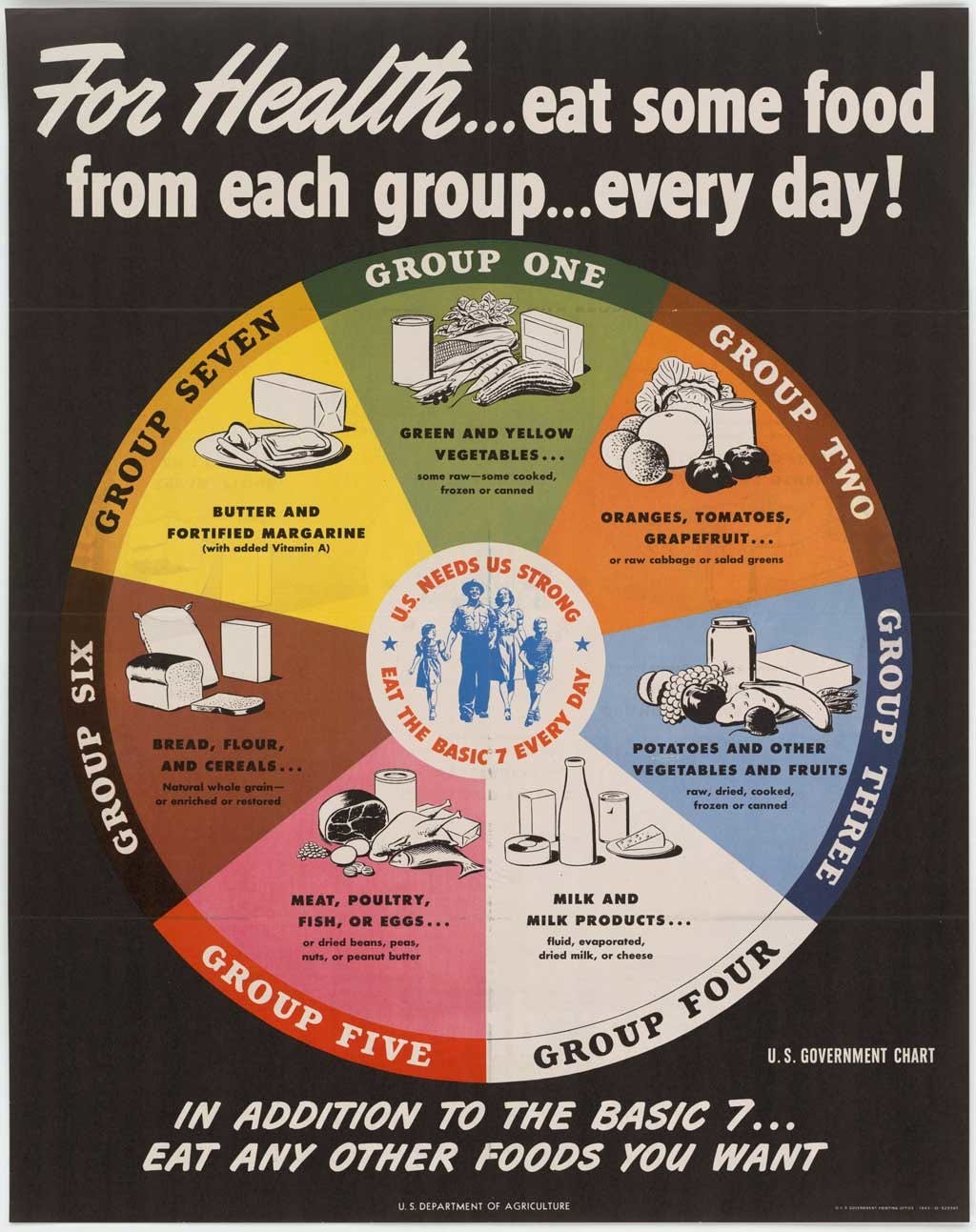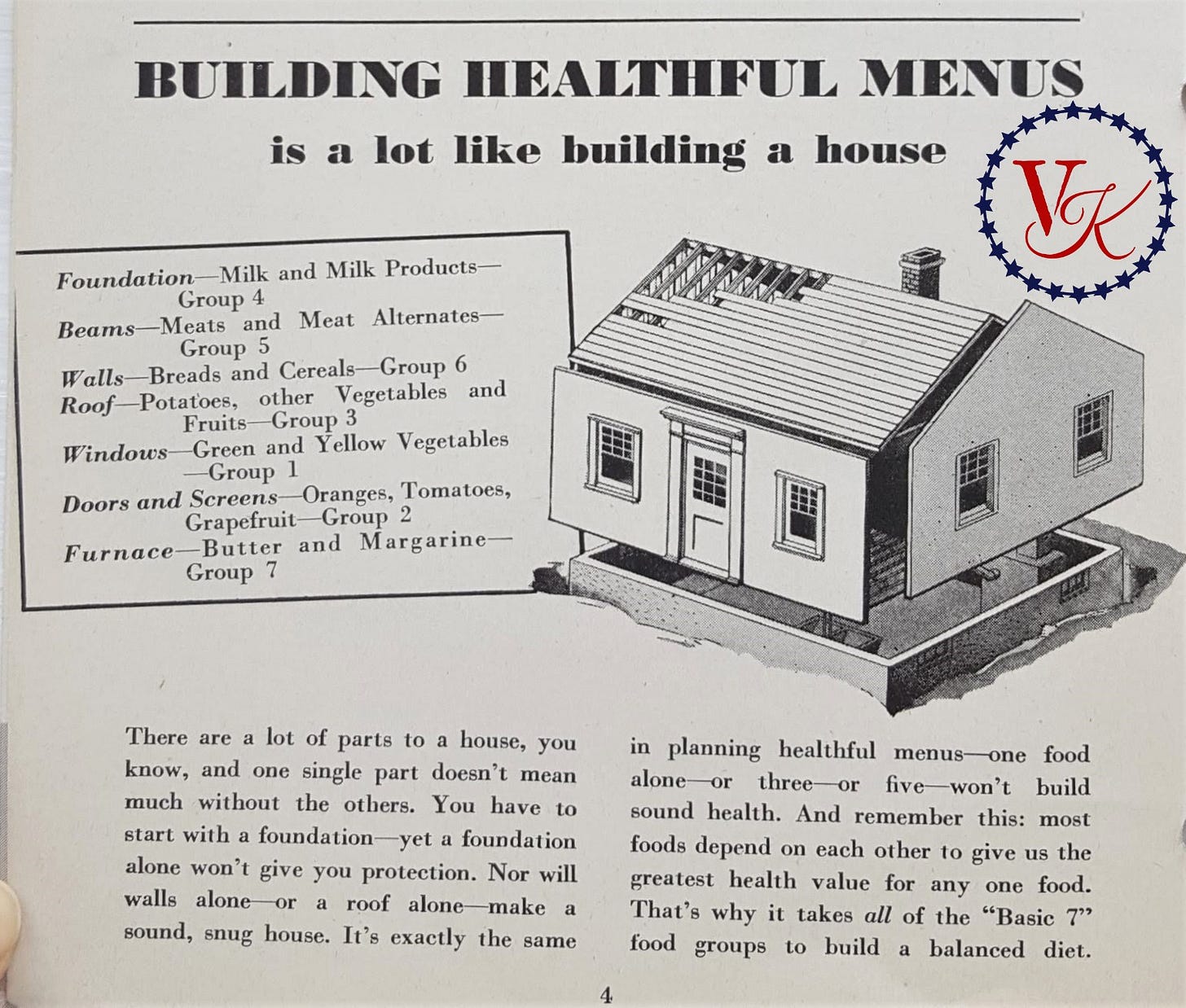Thrifty Tips From Wartime: A Healthy Foundation
80 Year Old Nutrition Advice That is Still Valid Today
When we think about nutrition today, it is a really loaded topic. Everyone has their own ideas, philosophies, foods that they love or demonize and individual health journeys that have worked for them (or haven’t.) And that’s the thing. It’s so unique and subjective because our bodies and backgrounds are so different.
A couple years ago I went to consult a nutritionist for some of my own health issues, and what I learned astounded me. The advice she gave me was nearly identical to what I knew from studying wartime nutrition ideas. This was pretty groundbreaking for me as a historian and just as a person trying to become healthier! I’m a huge fan of simple food, simple ideas that are easy to follow, and I’m weary of the feverish frenzy that is the health & nutrition world today. Anyone with me? So the fact that the nutrition information from the 1940s was still tried and true spoke volumes to me. Trends come and go, but foundational nutrition doesn’t change.
Good Nutrition Was Vital During WWII
Coming out of the Depression, Americans were really malnourished from poor food availability. A lot of young men were turned away from enlisting because of this, so the government set out to scientifically examine what balanced nutrition meant and how to teach the public about it. Americans needed to be healthy in order to fight, work, and serve. (Not to mention some horrible food habits needed to be corrected like having the classic donut and coffee for breakfast!) I remember reading this enlightening wartime article talking about boys training to be pilots and how boosts in Vitamin A greatly improved their eyes and their ability to see better at night. Amazing!
I’ve already got a few things I’ve posted if you’d like to learn more in depth on this topic:
Substack post - The Myth of Healthier Times
Podcast episode - “That’s A Lot of Vs” Nutrition during WWII
Podcast episode - “Keeping Trim for Uncle Sam” Diet Culture during WWII
Why 1940s Nutrition is Worth Learning About
One interesting aspect of this time period is that there were people who had modified diets anyway, like vegetarians, people who were lactose-intolerant, folks with food allergies, and those who had Celiac’s Disease (though they had much less understanding about it than they do now.) So there were exceptions and folks who had to modify the general advice the government was pushing.
What I find the most exciting about wartime nutrition is the emphasis on all kinds of proteins like beans, dairy and grains, because shortages of actual meat were pretty regular. Another thing I like is the grouping of foods based on the nutrition they offered.
I have quite a few wartime cookbooks which break down exactly how much of each vitamin and mineral we need and which foods offer them. I’d be interested in a comparison of this information to what levels of nutrition today’s foods offer.
What’s even more great is that many of these cookbooks have carefully thought out daily menus that deliver on this nutrition initiative. So, if you follow the menus, then you get all the nutrition you need for the day!
I will admit there is definitely more nuance in recipes and menus from today. Popular recipes pull from decades of trends after the war years. I mean, Americans weren’t eating much sourdough, yogurt or chia açai bowls in the 1940s. I do think, though, that there is still a lot we can glean from wartime ideas about nutrition and eating.
Build a Healthy House
“Most foods depend on each other to give us the greatest health value for any one food. That’s why it takes all of the “Basic 7” food groups to build a balanced diet.”
I love this graphic from the August 1943 Health For Victory Meal Planning Guide. It’s a great one for teaching about the importance of all of the food groups in the diet. You wouldn’t build a house without its roof. Or windows. Or foundation. It takes all of the parts together to build a strong house.
If you’re looking for a modern nutrition guide with old-fashioned common sense to turn to, I highly recommend the Canadian Food Guide website. It has excellent articles and a beautiful interface. I’m actually using it in homeschooling for part of my daughter’s Health requirement this year. And what’s interesting is that the Canadian food guide is rooted in WWII history just like the American one is!








It's interesting that in the chart produced by the American Meat Institute, meat holds the top honor while the chart produced by the USDA knocks meat all the way down to group five. I would guess that this is reflective of wartime realities. Meat needed to go to the military while we had plenty of grains. If that's the case then these various charts might have been less concerned with health than with changing eating habits in service of victory. Fair enough. Unfortunately, for whatever reason, most likely money flowing into politician's pockets, grain remained on top after the war and to this day.
As a life long history nerd I've learned a lot collecting old cookbooks. As a side benefit, I get to eat the history, too!
I love looking at the menus that they put in some of the old cookbooks. I have a 1940s version of The Joy of Cooking and the menu part is so fun to look over. Meals were actually really well-balanced. I thought to myself if I followed a similar pattern of eating, I'd probably do better than trying to adapt to today's plans which are just all over the place. One week something is good. The next it's bad. Then it's good again. And over and over. I am finding really that simple home cooking, simple ingredients, and balancing food groups in meals helps a lot. I sometimes look at those menus as springboards to create meal ideas.